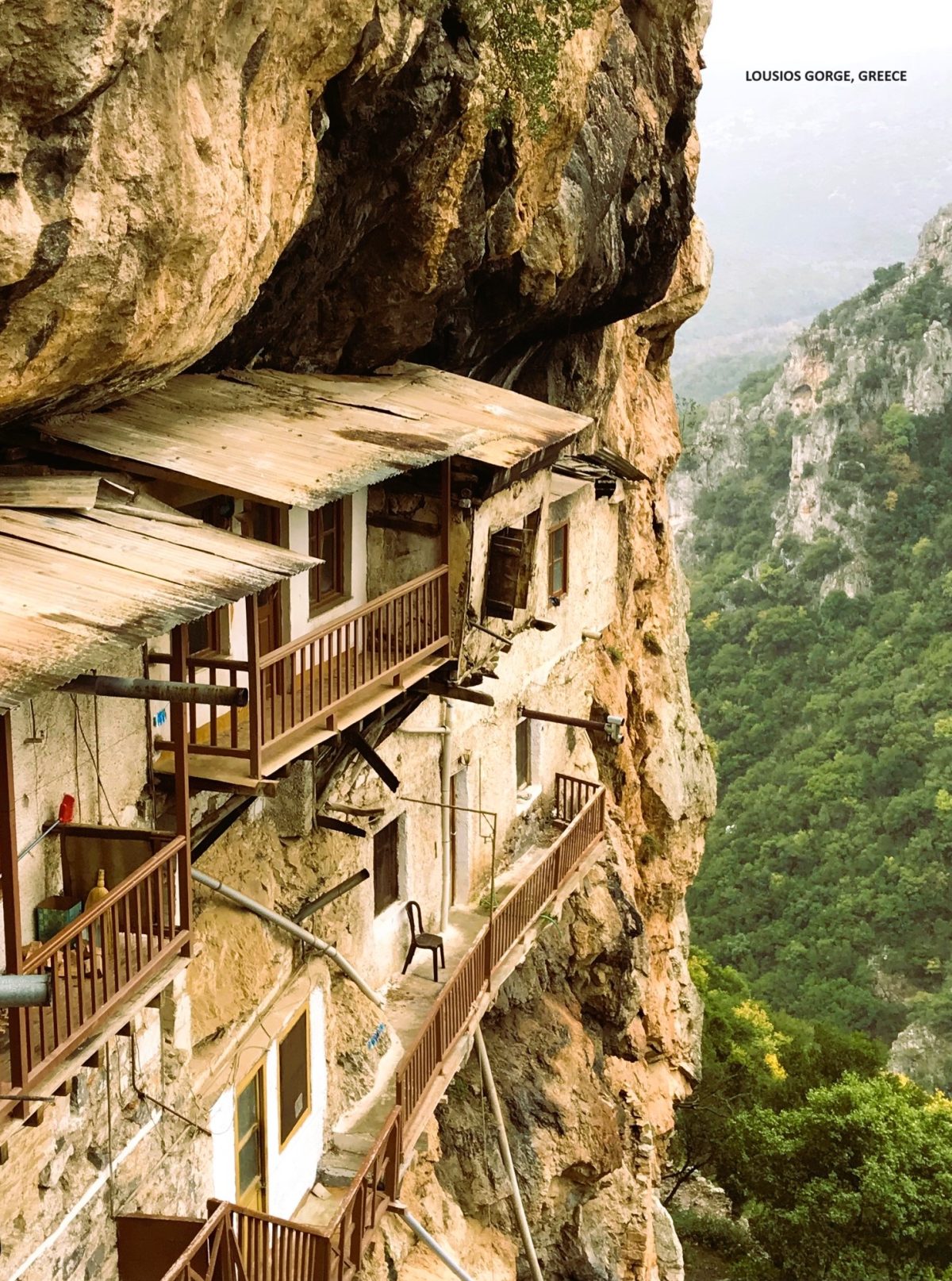Ponte de Lima was recommended as a place to visit by one of the owners of the hotel we were staying in, the Hotel Cotto do Gatto.
Situated just a few miles to the west of our hotel, it is one of the more popular stopping points on the Caminho de Santiago (the Portuguese Camino). It is also the oldest chartered town in Portugal although; this and many other places were in existence long before towns started being chartered in Portugal in 1125.
We had no trouble finding a parking spot near the Expolima even though a couple of events were in progress (a small farmers market and some kind of biker’s convention) and from there it was but a short walk to the main focus of this relatively small town, the old bridge across the River Lima.
On the way to the bridge we passed the Capela de Sao Joao. The original Chapel of Saint John in Ponte de Lima was destroyed by a fire, together with most of it’s contents, and was subsequently dismantled. The present octagonal shaped chapel was built in 1867. It’s a pretty little building but our (my) primary interest was the bridge and the town’s medieval centre which is reputedly one of the prettiest in Portugal. I think this may be on account of the large number of public parks and gardens in evidence all over the town. There are no less than 18 formal town gardens.
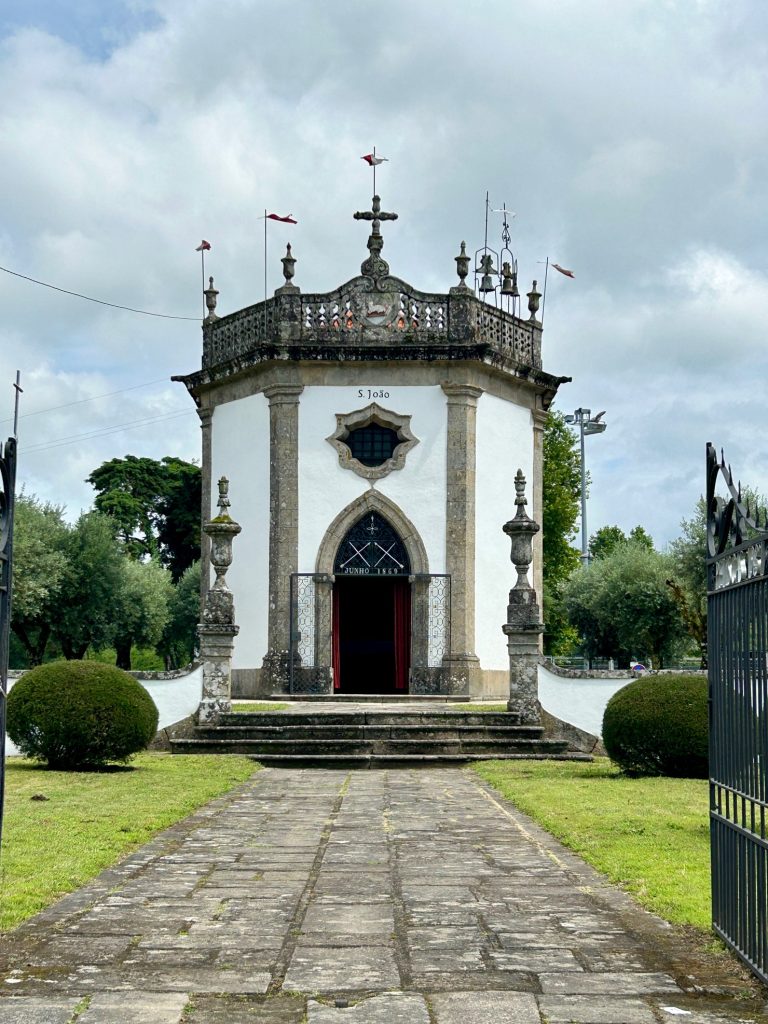
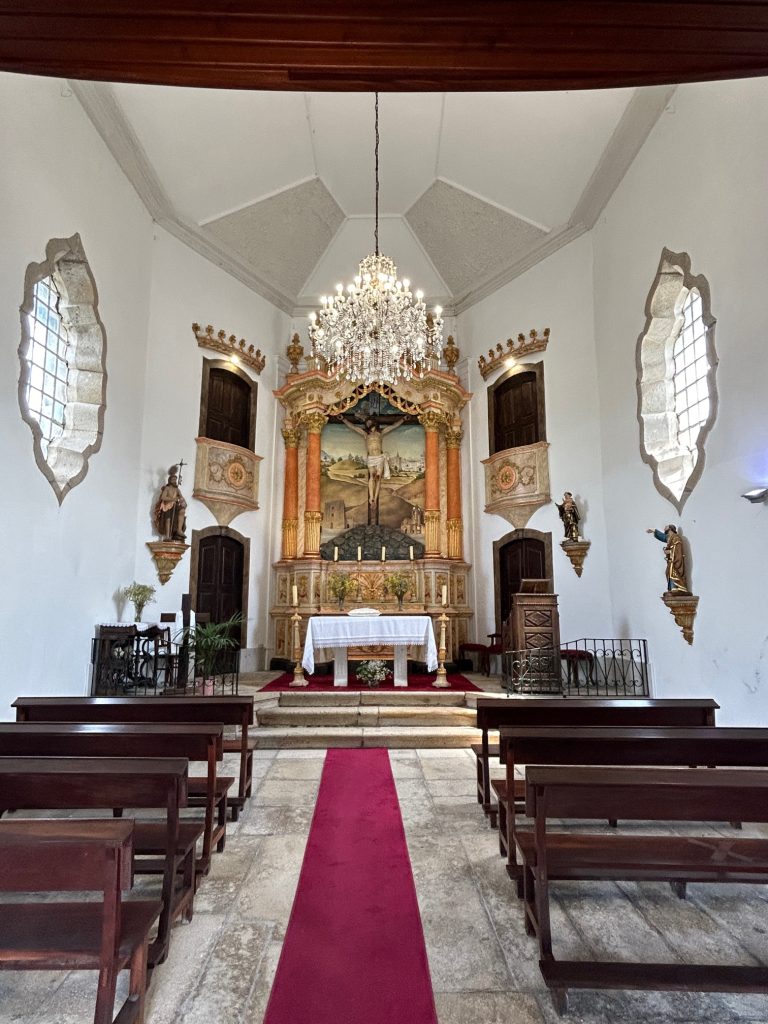
Ponte de Lima was named after it’s 1st century Roman bridge across the River Lima. Little remains of the original Roman bridge with it’s 5 arches. During the 14th century the bridge was renovated, fortified and considerably extended to 17 arches. Only 14 of these arches remain but the bridge is still an impressive 277 metres long and it makes for a very scenic photograph too with the white Baroque style church of Santo Antonio da Torre Velha at it’s western end.
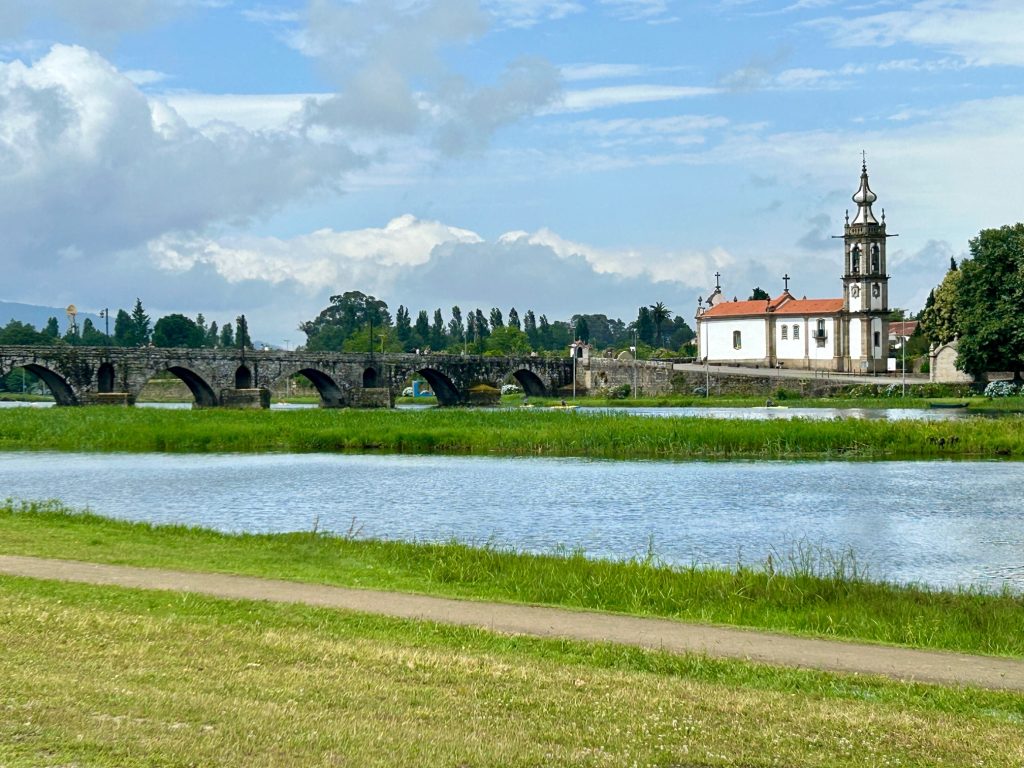
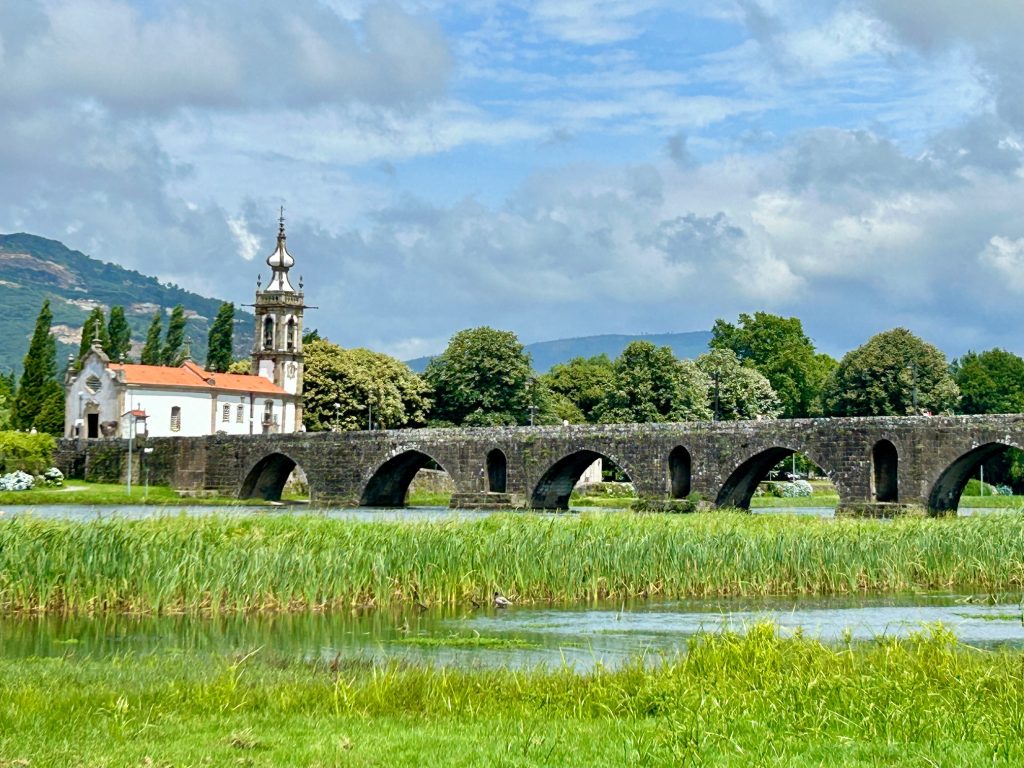
Pilgrims on the Caminho Santiago (Portuguese Camino) were pausing at a small chapel at the western end of the bridge for many years until it was replaced by the Igrejia de Santo Antonio da Torre Velha during the 18th century. Next to the church is a monument celebrating the efforts of the pilgrims on their way to Santiago.

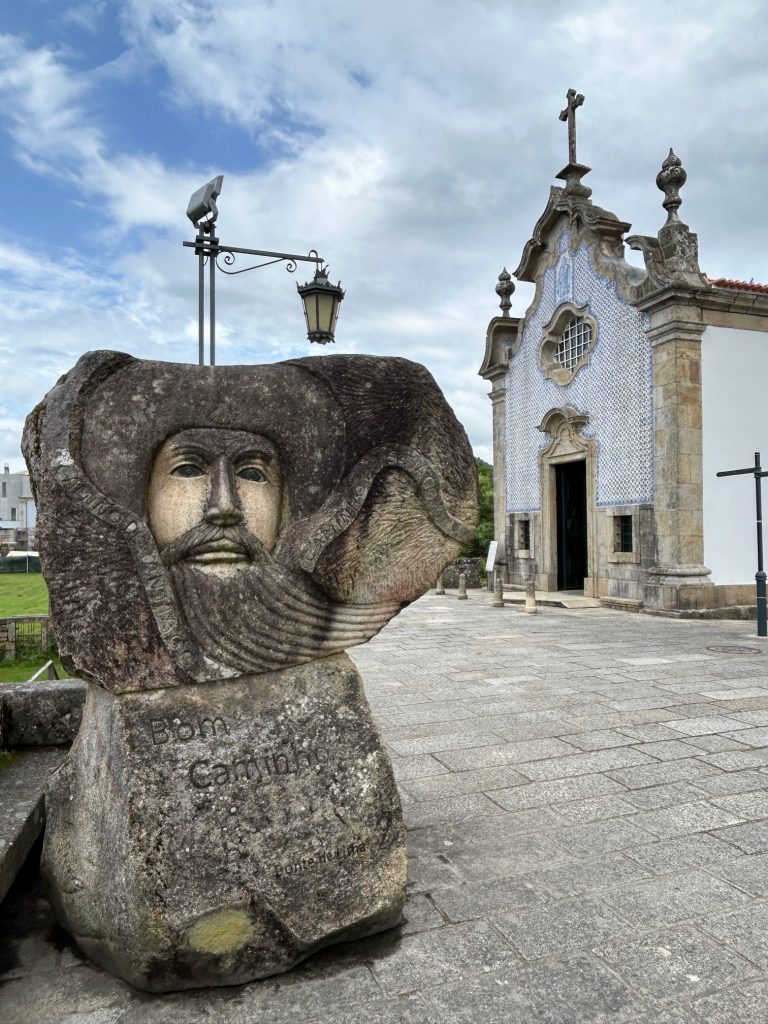
The inside of the Igreja de Santo Antonio da Torre Velha is quite spartan except for what I think is a very stylish altar. No?
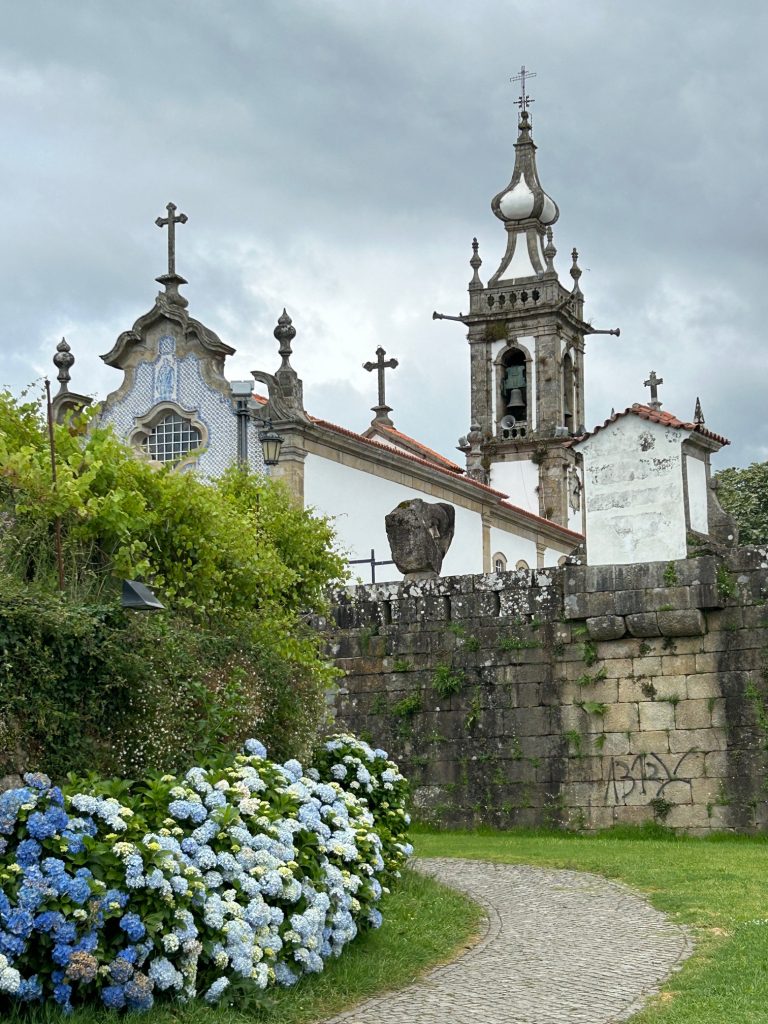
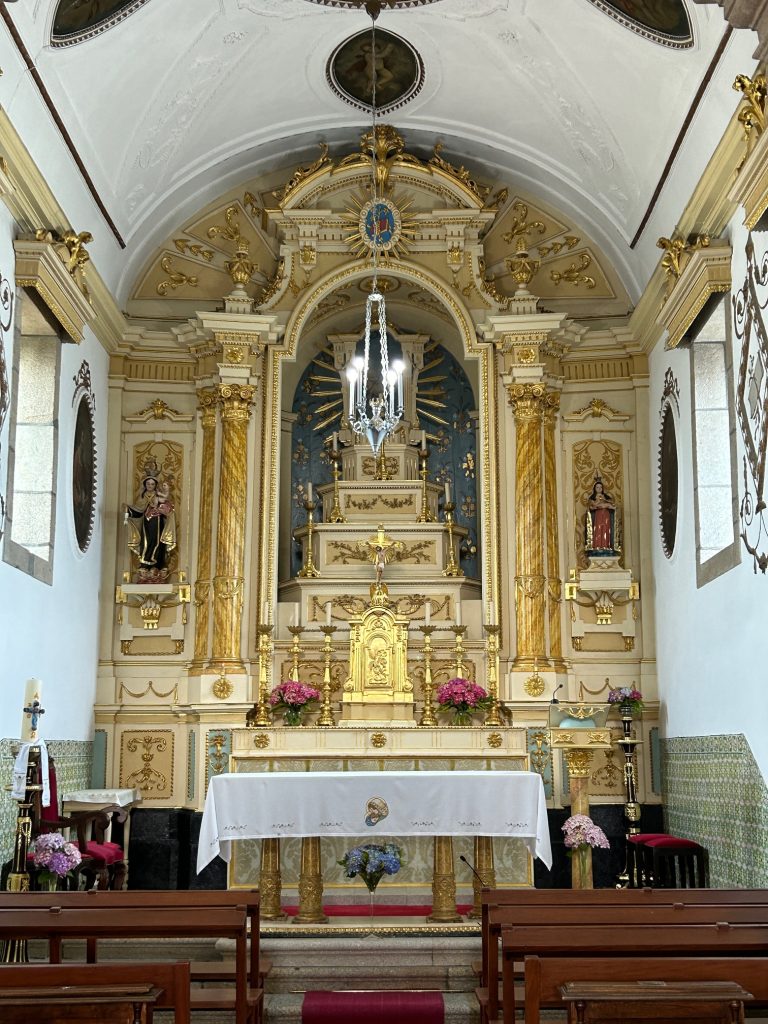
There’s a legend surrounding this part of the river. In 138 BC a Roman army under the General Decimus Junius Brutus was advancing north into what is now Galicia but, upon reaching the River Lima, the legionnaires refused to cross. It seems the area was so enchanting they confused the River Lima with the River Lethe; otherwise known as the River of Forgetfulness. The Lethe is one of five mythical rivers leading to Hades; famous for it’s beauty and it’s capacity to erase the memories of anyone who drank from it or was immersed in it.
The legionnaires’ commanding officer was compelled to cross the river first and then to call out the names of individual soldiers who were to follow him. By such means he was able to demonstrate that it was safe to cross and that he had not lost his mind. The rest of the force slowly followed his example but it was decided there and then that a bridge would be built to expedite future crossings.
This tale explains why there are statues of legionnaires lined up at the eastern end of the bridge, in the car park alongside the town’s main square (the Largo de Camoes Plaza) and; an officer on horseback (Decimus Junius Brutus) at the western end of the bridge.


The River Lima forms one side of the Largo de Camoes Plaza. The other three sides are mostly bars and cafes which face the river. It’s a nice place to sit and enjoy a spot of lunch, which we did. The local wine (vinho verde) and a couple of tapas dishes. The square’s principal features are it’s fountain (the Chafariz Fonte Publica built in 1603) and, at the southern end, an old prison keep which now houses the local tourist office.
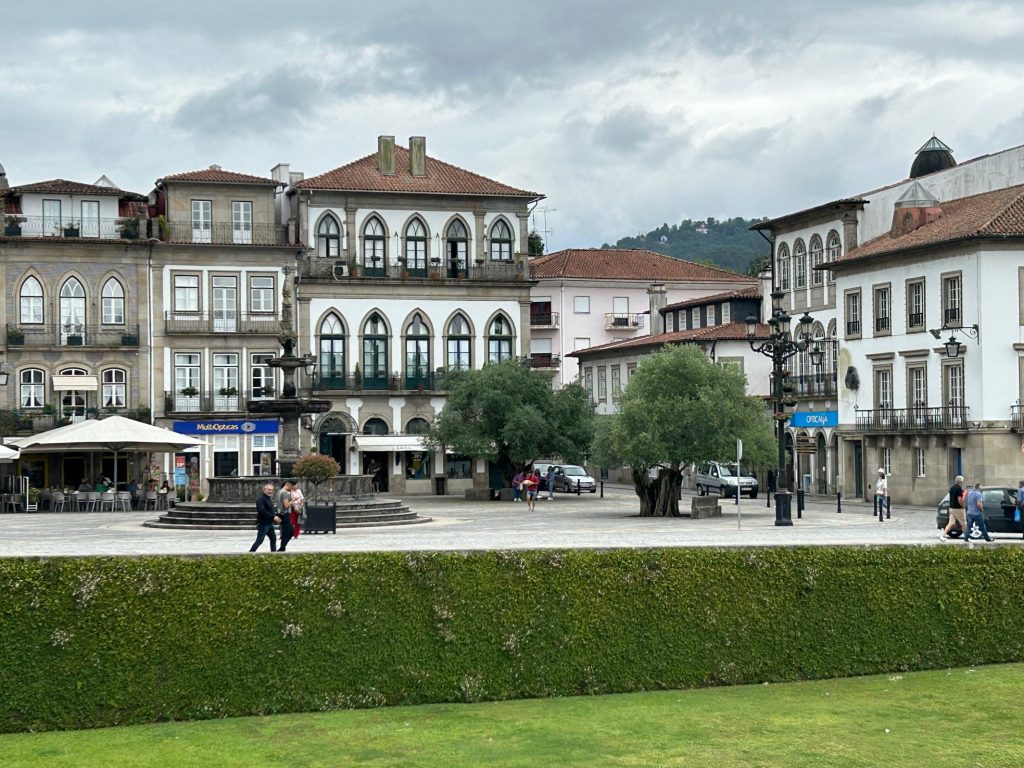
Most of the medieval part of the town is to be found behind the square and the old prison keep. This includes the main church, the Igreza Matriz de Ponte Lima and the Camera Municipal (the town hall) which was once a private mansion. It also includes another very pretty chapel towards the north end of the town, the Capela des Pereiras built in 1525 (and initially named the Chapel of Santa Rita de Cassia) but renovated in 1818 (minus the bell tower – I wonder if there ever was one?). This is the chapel to visit for the views towards the mountains and across the town but you’ll not see any of mine – I accidently deleted them.
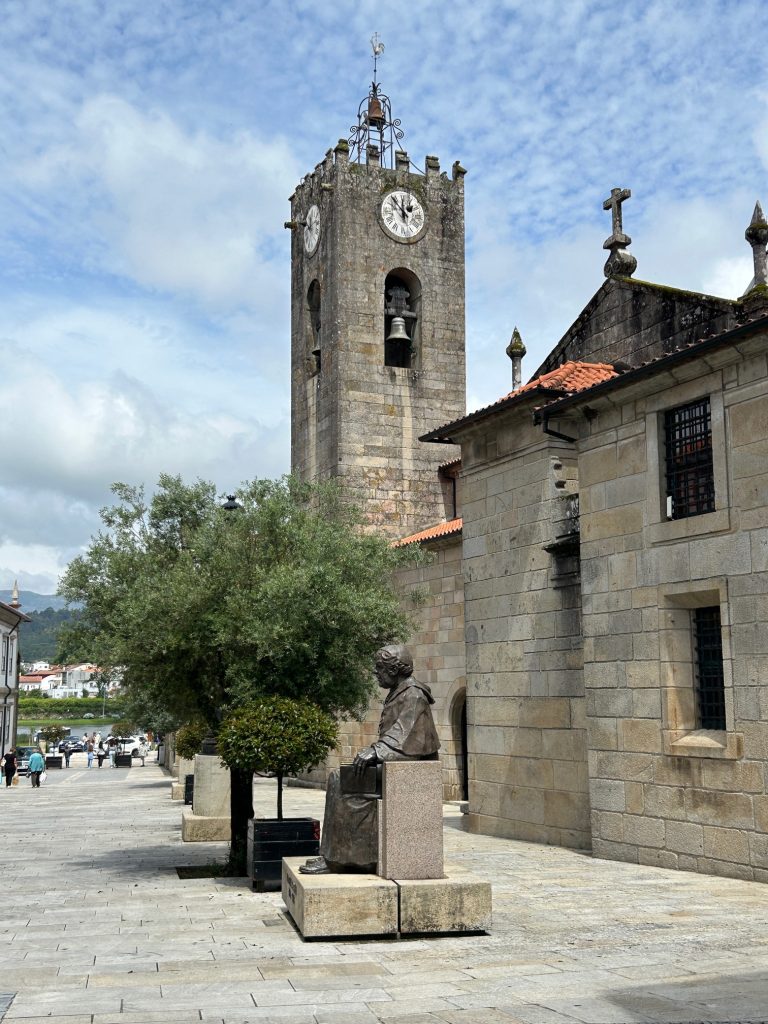
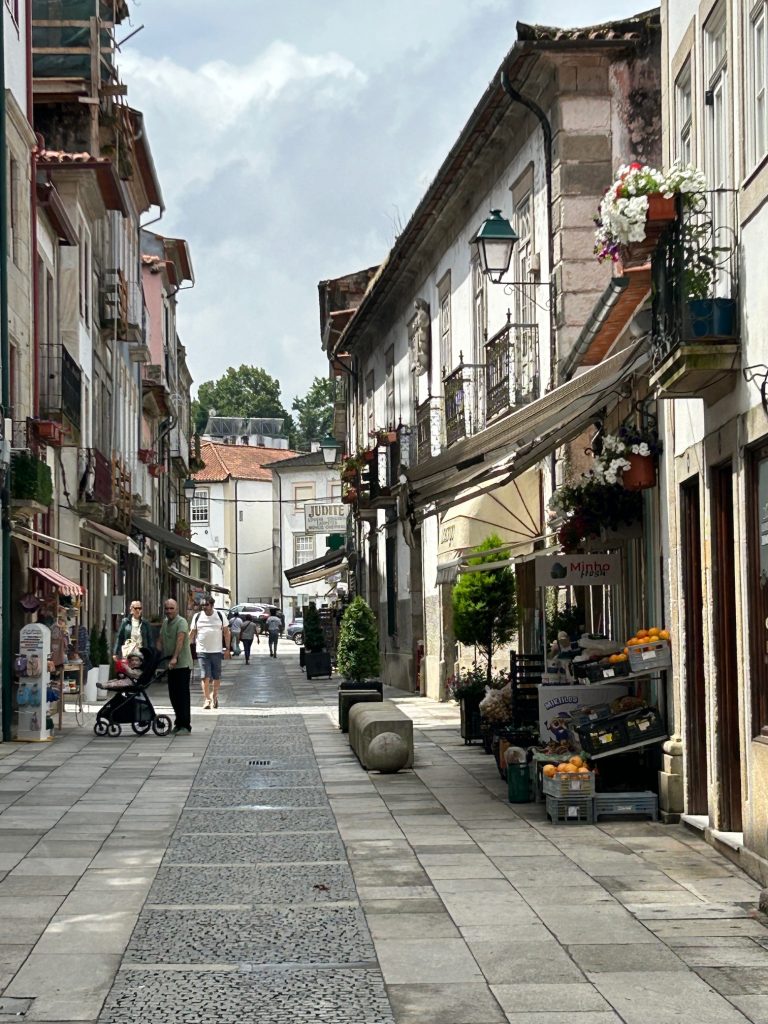
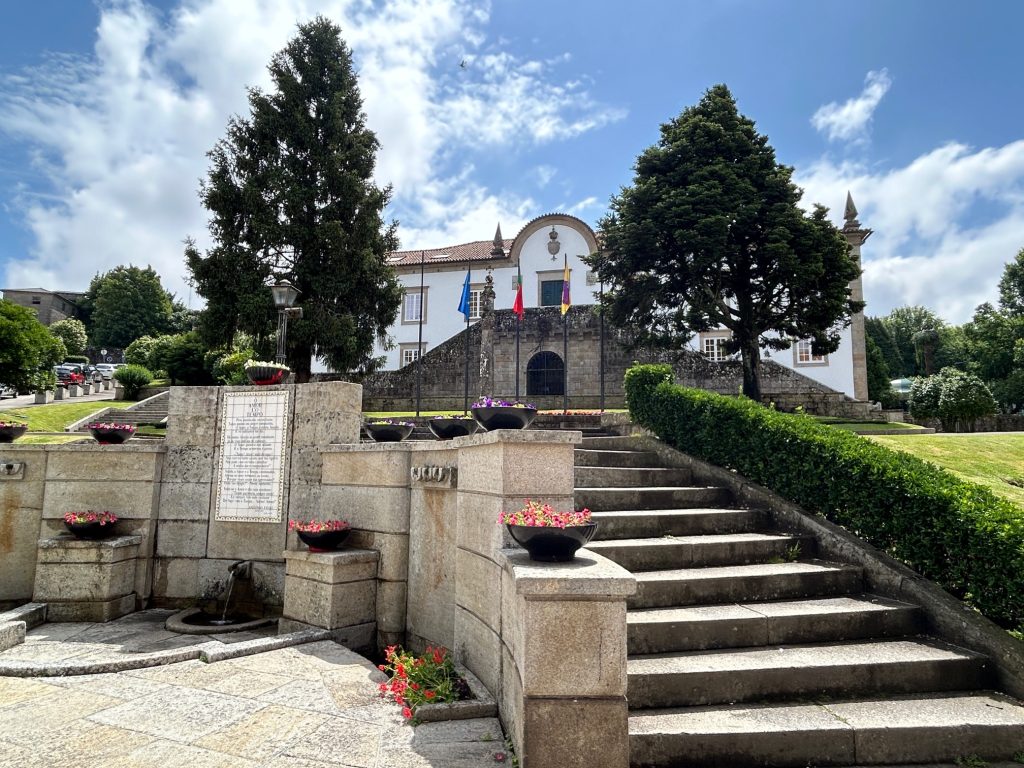
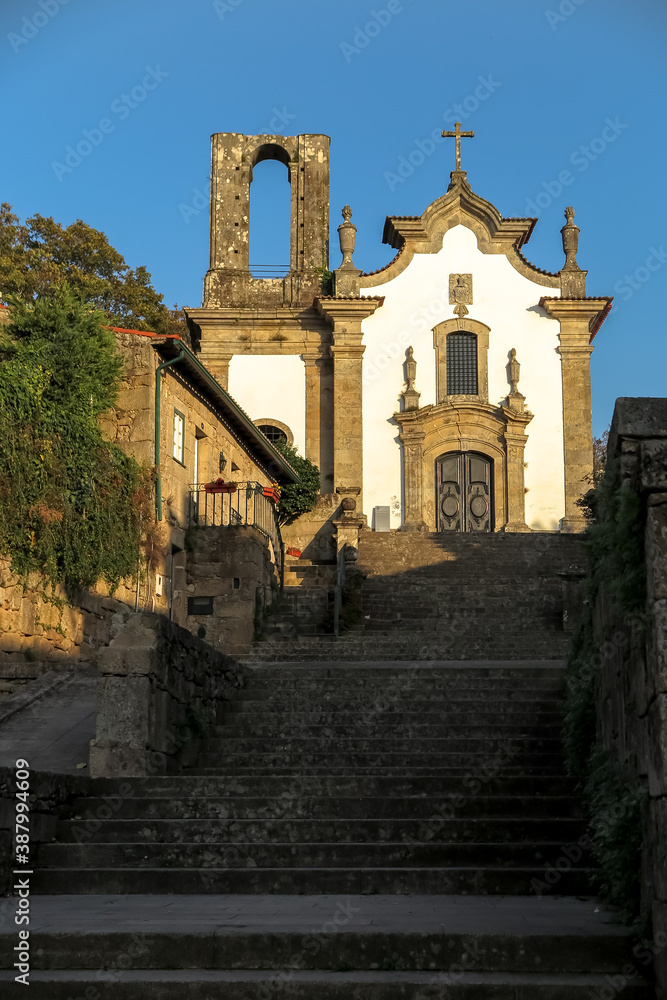
I wrote earlier that there are 18 formal gardens in Ponte de Lima. I thought to visit a couple while in the town and settled on the Arnado Park (behind the Santo Antonio Church) and the Jardim dos Labirintos Botanical Garden (where the Ponte de Lima International Garden Festival has been held every year since 2005). The Arnado Park was ‘okay’ but, nothing great. The International Garden Festival was a real disappointment. It is described as “a unique initiative.. which relaunched the taste and cult of gardens and gardening”. I’ll let you know. It proved far too intellectual for me. I enjoy gardens that have a focus towards the beautiful brilliant colours of shapes of living plants (and the odd water feature) and not some pretentious plastic or tin interpretation of a garden.
It’s a shame because, by and large, Ponte de Lima is a very pretty place. There are hydrangeas in abundance and they were very wonderful to see but… no, you can keep the pompous, hollow…. enough David!
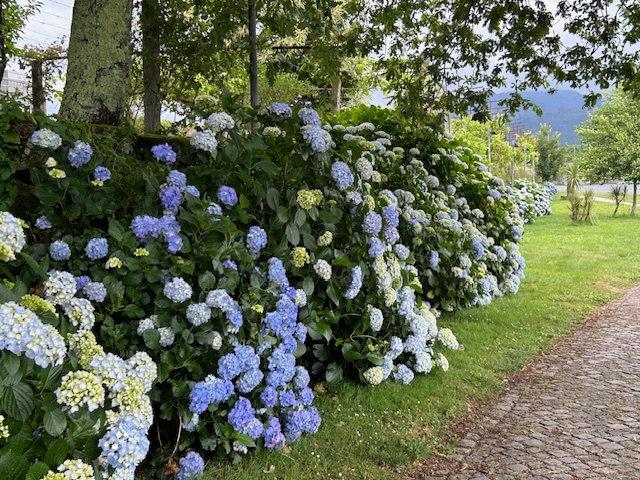
I’ll leave you with a couple of photos of Beanie in Punte de Lima…



